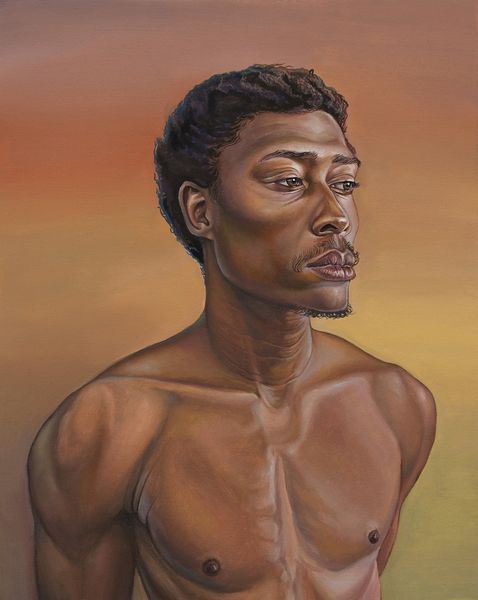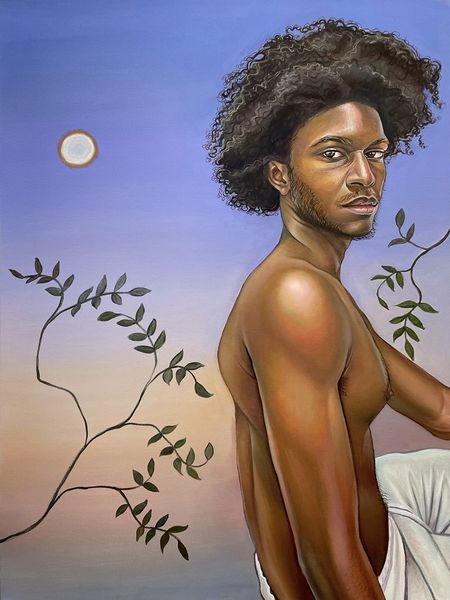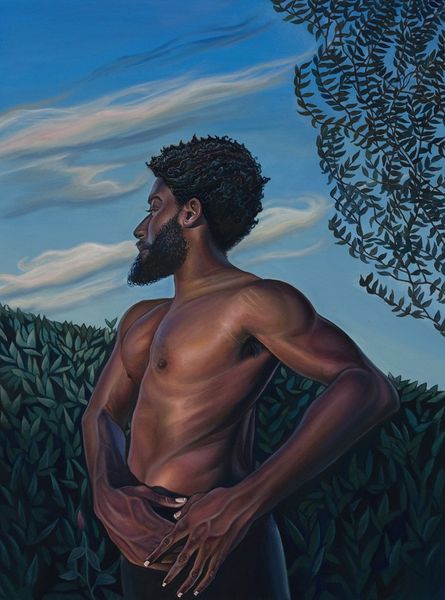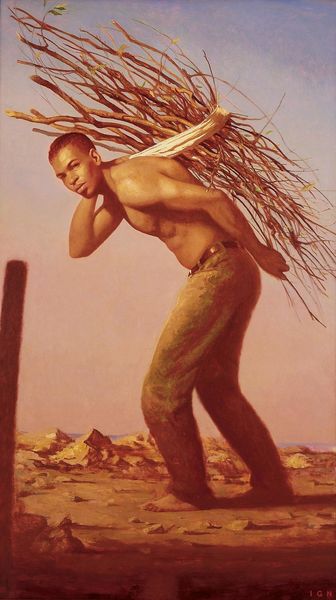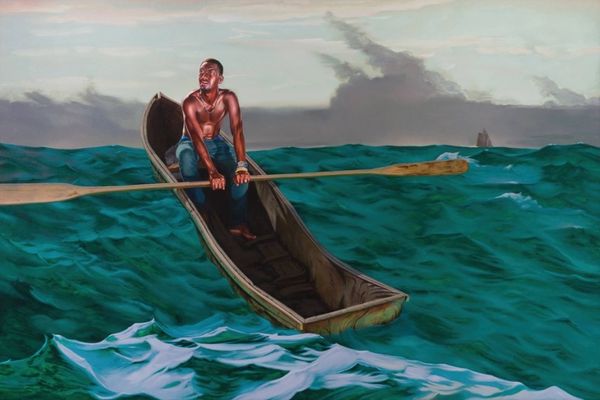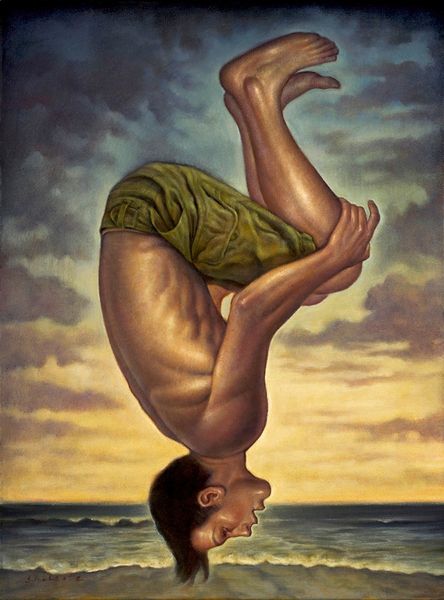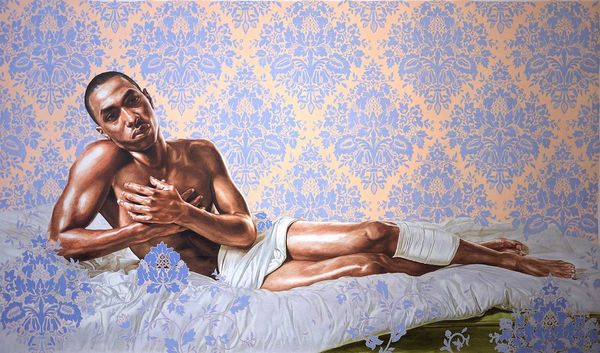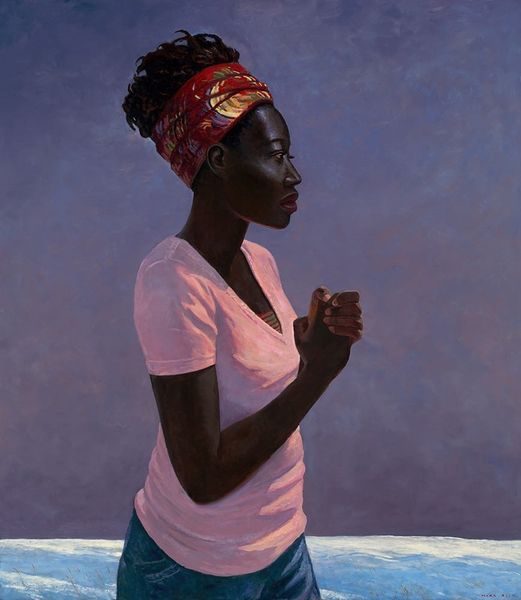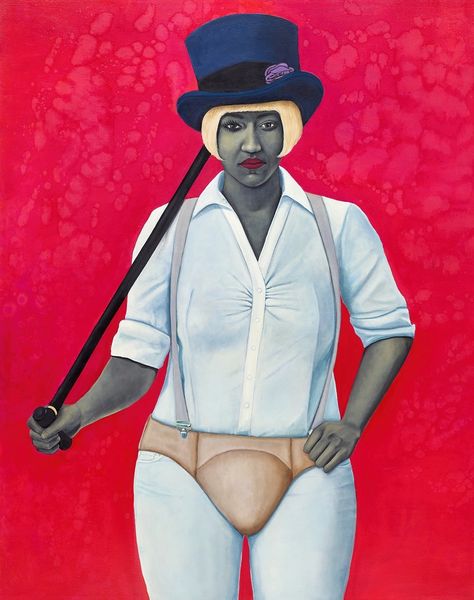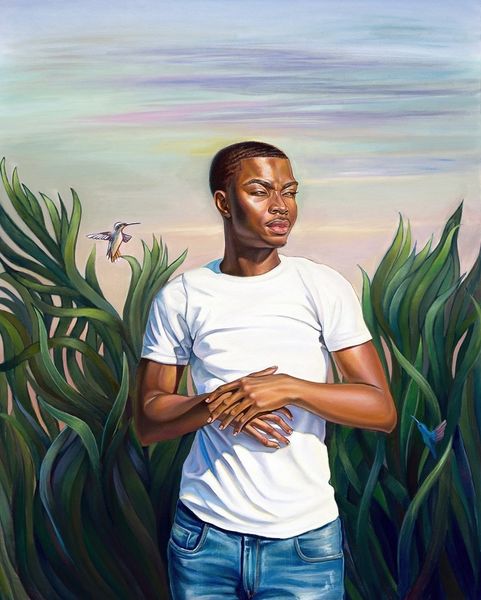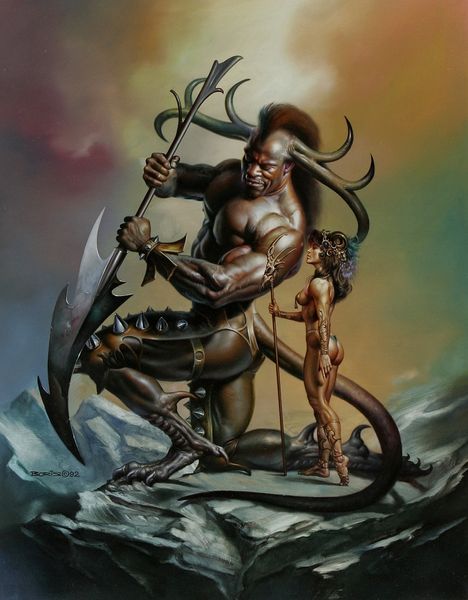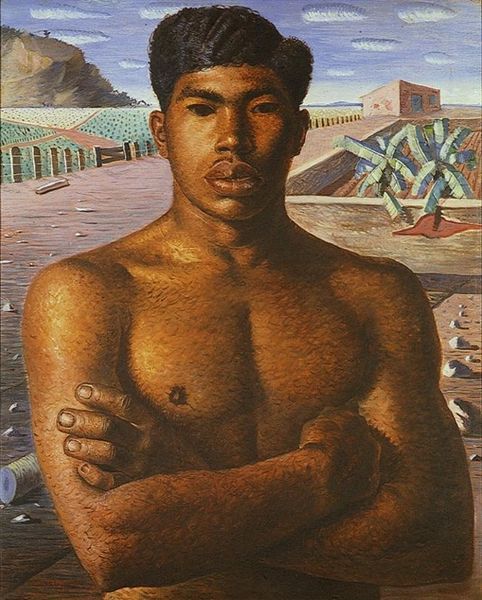
plein-air, acrylic-paint
#
portrait
#
pattern-and-decoration
#
figurative
#
contemporary
#
narrative-art
#
plein-air
#
acrylic-paint
#
figuration
#
acrylic on canvas
#
portrait drawing
#
portrait art
#
self portrait
Copyright: Public Domain: Artvee
Editor: So, this is Kehinde Wiley's "Fishermen Upon A Lee-Shore, In Squally Weather," from 2017, done in acrylic. The power and beauty of the figure against that turbulent sea is really striking, and there’s something about that found piece of wood he’s holding that pulls you in. How do you see this work? Curator: This piece, like much of Wiley’s oeuvre, really speaks to the complexities of artistic production. Consider the source material: Turner's painting of the same name. Wiley is intervening, appropriating the original landscape painting but changing the model into a contemporary black man, highlighting the ways in which Western art history has often excluded or marginalized Black figures. What do you make of this choice of model in connection to the 'Fishermen' concept? Editor: I see how Wiley’s centering the Black body in a space it’s historically been excluded from. But how does his choice of acrylic as the material inform the overall impact, and what does the use of found wood symbolize, in the work itself? Curator: Acrylic, as a more accessible and contemporary medium, democratizes the creation process compared to traditional oil painting, linking it to broader social changes in art consumption and availability. The piece of found wood, contrasts the man-made with the organic: something claimed by the Black man's world vs the production methods he chose in his art, adding layers of meaning around labor, value, and access to materials. Do you see those ideas amplified here in the narrative? Editor: Definitely, especially connecting it to accessibility and re-evaluation of traditional art hierarchies. I hadn’t really thought about the economic implications of the medium and that addition. Curator: Exactly. The social context and production of this portrait encourages questioning the prevailing cultural and class power dynamics implicit in fine art. A potent conversation, I’d say. Editor: It is, a powerful dialogue to be having in a museum setting like this!
Comments
No comments
Be the first to comment and join the conversation on the ultimate creative platform.

